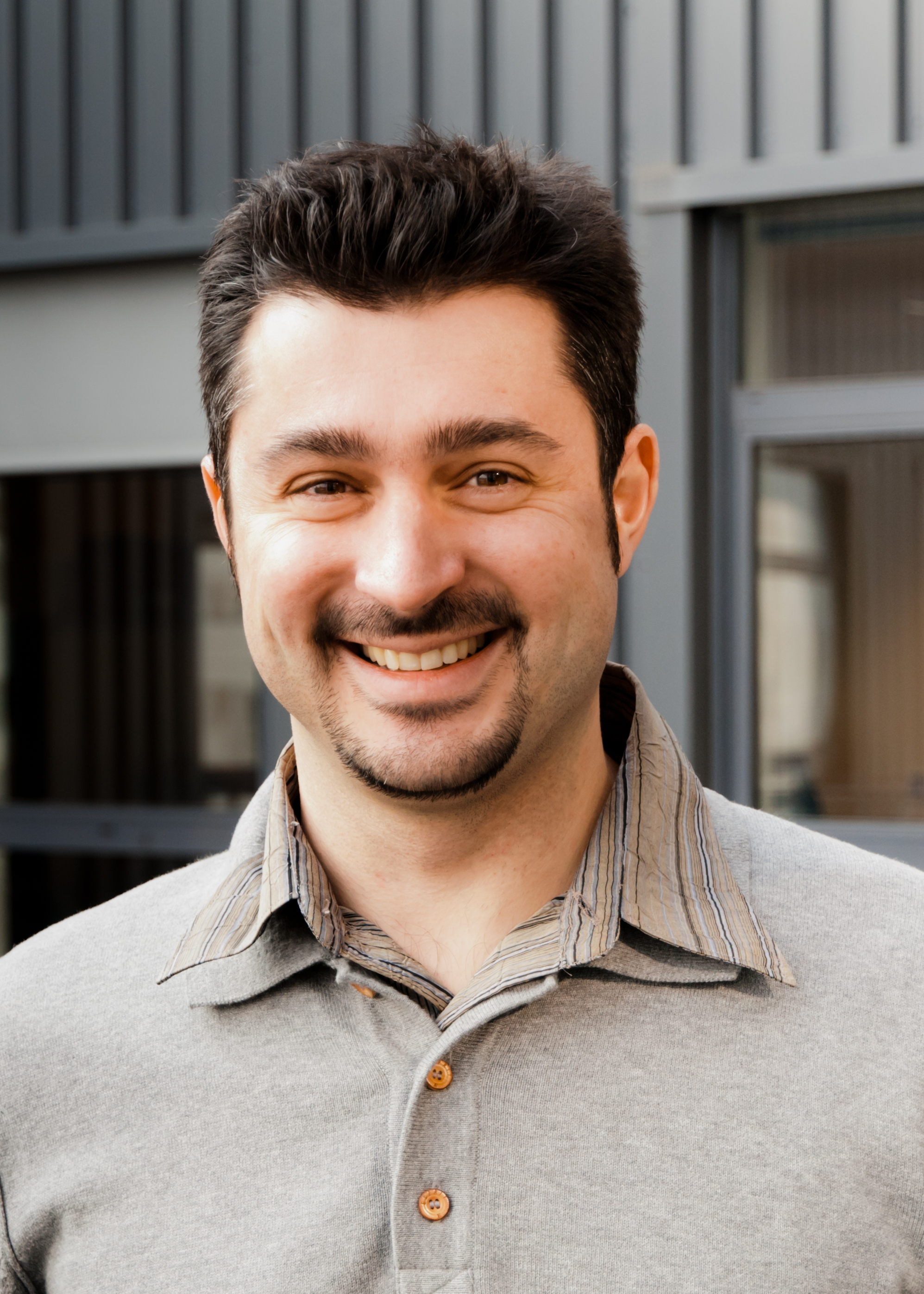
Michaël Pelissier
PhD, Visiting Scientist
Host Laboratory:Computer Systems Laboratory (CSL)
School of
Electrical and Computer Engineering
Cornell University
Address: Ward, Cornell
University, Ithaca, NY 14853, USA
Email: michael.pelissier at cornell dot edu
Original Laboratory:
Laboratory
of Integrated Radiofrequency Architecture (LAIR)
Design Architectures & Embedded Software Division (DACLE)
LETI belonging to CEA
Address: MINATEC Campus, 17 rue des martyrs, F-38054 Grenoble Cedex, FR
Email: michael.pelissier at cea dot fr
Brief biography
Michael Pelissier received both engineering and master degree in Electrical Engineering and Telecommunications from the INPG (Grenoble, French Higher Institute of Engineering) in 2003 and a PhD degree from the same institute in 2006 in the optoelectronics and radiofrequency fields. After some experience in Philips Nijmegen in Netherlands, he joined CEA-Leti Minatec Campus in Grenoble in 2003. His fields of research are radio architecture & systems solution, analog RF front end design for impulse UWB-RFID, RF discrete time , sub-nyquist sampling and sparse signal processing for WLAN or cellular PMR applications. He is in charge of the specifications and ASIC team leading for the development of RF receiver solution. He has published about 20 publications in per review conferences and journals. He is the author of 8 patents, 3 book-chapters and 1 JEDEC standardization chapter document. In 2011 he received from the SEE, the award “Grand prix de l’électronique du general Ferrié” that have been rewarded since 1963 outstanding work in the field of electronics. In 2012 he got the award of the “national competition for start up support” from French research ministry in emerging technology and has been in 2015 elevated to the grade of CEA expert in the field of analog electronics.
Selected Publications :
About DACLE division of CEA-LETI
The CEA-LETI is focused on micro and nanotechnologies and their
applications, from wireless devices and systems, to biology and
healthcare or photonics. Nanoelectronics and Microsystems (MEMS) are at
the core of its silicon activities. As a major player in the MINATEC
innovation campus, CEA-LETI operates 8,000-m2 state-of-the-art clean
rooms, on 24/7 mode, on 200mm and 300mm wafer standards. With 1,200
employees, CEA-LETI trains more than 150 Ph.D. students and hosts 200
assignees from partner companies. Strongly committed to the creation of
value for the industry, CEA-LETI puts a strong emphasis on intellectual
property and owns more than 1,400 patent families. Leti is based in Grenoble, France, and has offices in Silicon Valley, Calif., and Tokyo.
The Design Architectures & Embedded Software Division (DACLE division), common to CEA-LETI and CEA-LIST, gathers more than 240 people focusing on RF, digital and SoC, design for image, design environment and embedded software. CEA LETI DACLE is one of the few research teams, worldwide, able to design and test complex integrated circuits in the most advanced CMOS technologies. Researchers perform work for both internal clients and outside customers, including Nokia, STMicroelectronics, NEC, Atmel, Sofradir, Ulis, MicroOLED, Sagem, Trixell, Siemens Medical Systems, Kalray, Magillem. Its major focuses are on:
- The design of complex digital integrated circuits, with a specific focus on massively parallel architectures optimized in power and tolerant to variations ;
- the development of new software technologies allowing the design and programming of smart miniature systems, with a specific focus on cost and resources constrained applications,
- the design of innovative, potentially heterogeneous, mixed signal integrated circuits, in the imagers and radio-frequencies fields.
Read More :
About the research project : CORSAIR
In our daily life, digital contents are usually shared in a compress format. Compression is usually performed after the acquisition and conversion of analog signal. It could require huge amount of data acquisition and processing because of the growing resolution capability of the sensors. One might wonder why in the first place such a large amount of data is acquired if only a small part of information is really useful. Compress sensing (CS) proposes to directly extract the relevant information already during the acquisition stage. The problem is fully transferable to radio-frequency receivers if we figure out the signal as the electromagnetic signal collected by the antenna. The approach is known as "analog-to-information conversion" rather than "analog-to-digital conversion" to the extent that it seeks to convert useful information, rather than to acquire the raw signal at Nyquist rate followed by compression. The principle is all the more applicable than the input signal is considered sparse, this means that it does not occupy the full spectrum, the full time period or the full space. The objective of the COmpRessive Sensing Adaptive radiofrequency Receiver (CORSAIR) project is to investigate the benefits we can expect of such innovative concept in RF receiver. The project is funded by the Enhanced Eurotalents program which is an international mobility program for advanced researchers at postdoctoral leve co-funded by the European Commission.